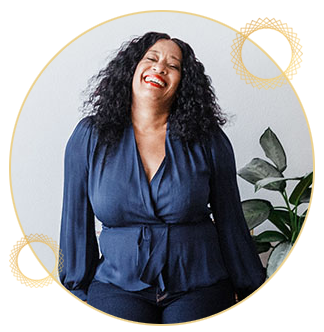
Conflict can be scary, upsetting, and challenging to navigate. Moreover, most of us weren’t equipped with the skills necessary to deal with conflict. So many of us do anything in our power to repress our discomfort, including allowing people to override our boundaries. Or we simply don’t speak up for fear of the repercussions of confronting a problem head on.
Yet, conflict is inevitable and at one point or another, learning how to communicate through conflict will improve the quality of your relationships with the people that matter to you.
How to Communicate More Effectively Through Conflict
Here are some pointers for you to practice with on
Listen!
First and foremost way to navigate conflict is to listen. So often we engage in a conflict putting most of our attention on what we want to say and miss most of what is really going on. Give yourself time to process, as needed. Ground yourself. Take a breath. Take a walk. Give yourself whatever you need to be able to listen as well as share.
Take a Look Within
If possible, address you first. Get clear about what is bothering you and about what you want for yourself instead.
For example, in my early career I reported to someone who micro-managed as a leadership style. This is the absolute least effective working environment for me. I felt stressed whenever assigned something or when in conversation with this person because I knew that I’d have to redo it even after being asked to own the deliverable. I also felt resentful that my name was attached to a finished product that had little to do with me.
I was done with this person, ya’ll. Done.
At first, I pushed back. Hard. This backfired because she had the ability to measure my performance and assessed me based upon my personality as it related to being agreeable with her style.
I knew we needed to have a conversation and also knew that going in with my opinion about her management style would only create an accusation and defense conversation. So, I asked myself a few questions like:
- What was bothering me about what was going on?
- What was making this so difficult for me?
- What meaning was I attaching to this issue?
The issue for me (amongst other things) was trust and what, to me, felt like inauthenticity in the delivered end result. Taking the time to get clear about what was really happening for me helped me determine how I would respond to the situation versus reacting to how I felt.
Use “I” Statements
So, as classic as this advice is, it’s not to be underestimated: Use “I” statements during a disagreement versus the more accusatory “you” statements.
In other words, say things like “I feel X when you do Y”. Taking this approach allows you to clarify your boundaries and what you need for the relationship to move forward in a healthy way.
The Other “I”: Inquire
Ask questions from a place of curiosity versus showing them where they are wrong. This goes hand in hand with listening.
For me, there was nothing I was going to say to stop someone from using a micromanagement style, nor was that my goal (because I can influence me first and foremost).
By listening and asking questions I learned that she was stressed and overwhelmed in general and that, in many ways, she was unaware of the impact that she was having on those around her. She’d been promoted into a role because she was really good at job, but the area of leadership was new terrain for her.
Did she change? Unfortunately, not during the time that I worked there. However, having context helped me to better navigate the situation, including not taking her behavior as personally as I was previously.
Conflict can have very positive results when two or more people are aligned on its resolution. However, it is challenging and can be stressful to be in the midst of it. Remember that setting boundaries, caring for yourself while in conflict, pausing for clarity, and learning other new behaviors get easier with practice.
Tying it all Together: What Kind of Legacy Will You Leave?
When you think about your family legacy, think about the way you show up for yourself, the way you parent, the way you care for your body and the way you communicate in the spaces that matter to you. Shaping a healthy relationship with yourself is a seed planting exercise that can have profound and residual impact on your legacy.

About the founder: Lisane Basquiat is not only an entrepreneur but a community leader who leads with compassion and purpose.
Most recently, she led important conversation on social justice, mental and emotional health during crisis, and empowered action to repairing generational traumas through her platform and virtual programs via Shaping Freedom®

